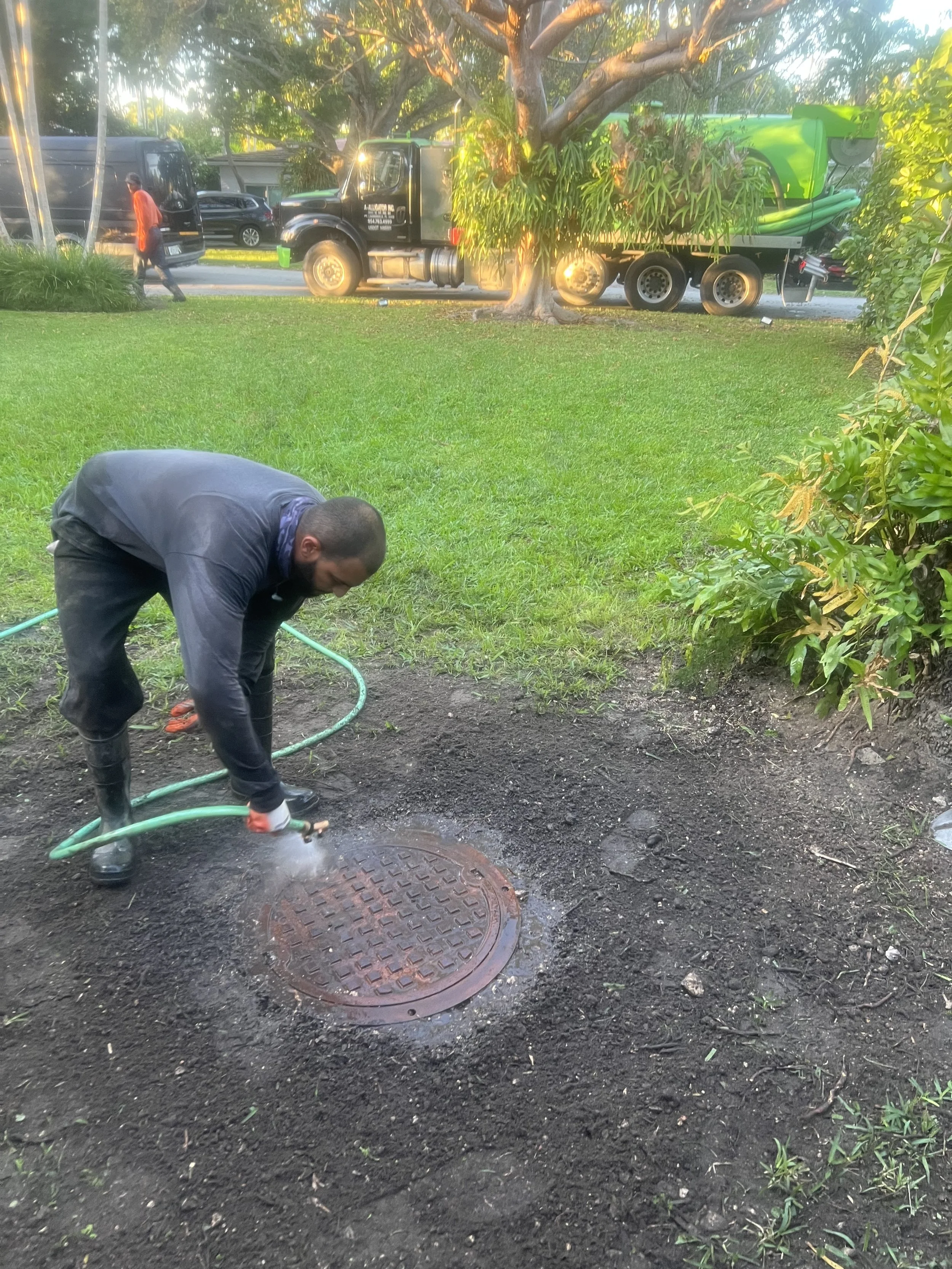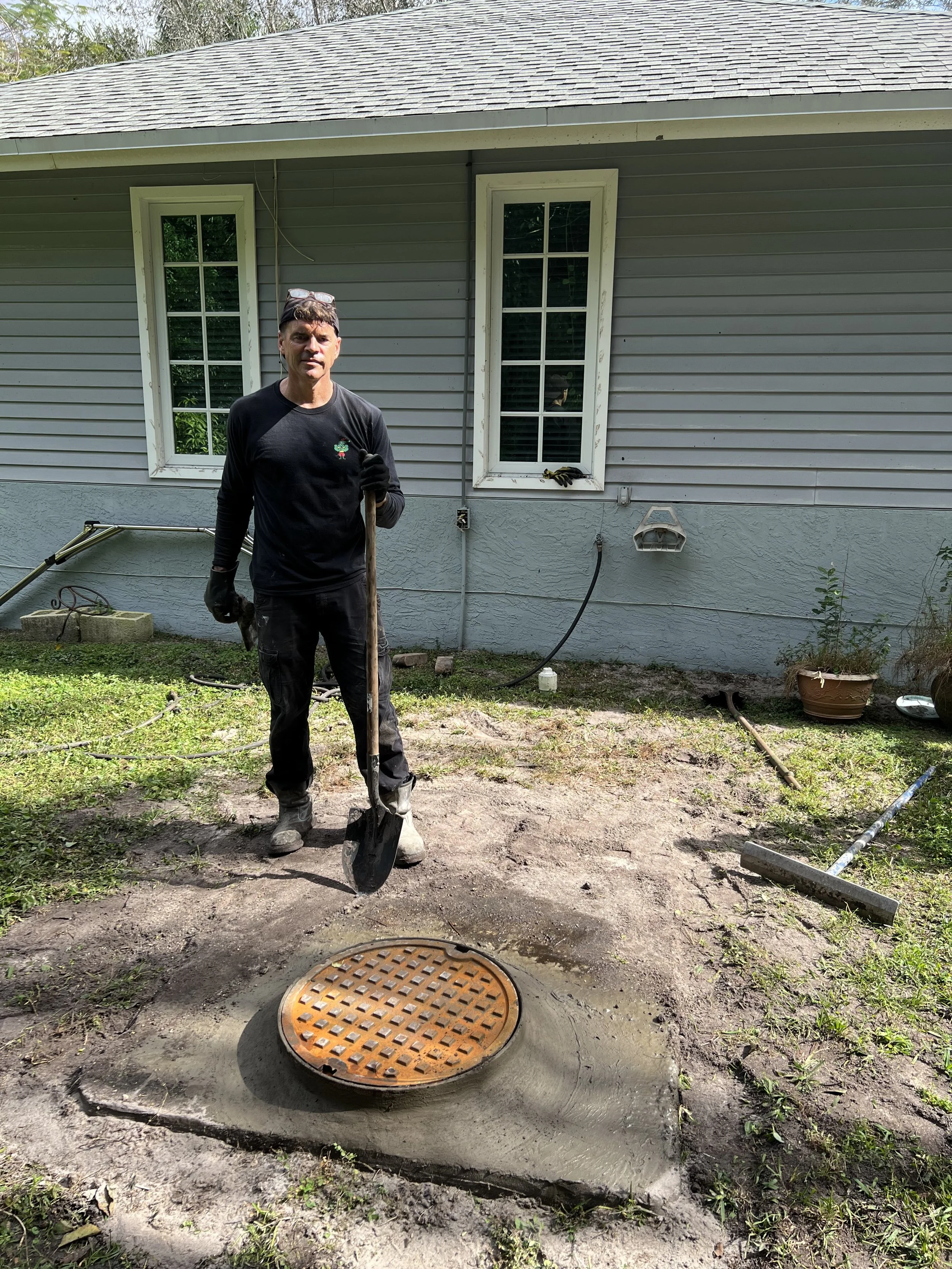Septic Tank Filter. Everything You Need To Know.
A septic tank filter is designed to keep small particles out of the drain field. The filter is made of slotted plastic or nylon brushes.
The filter sits in the outlet pipe at the back of the septic tank. The small slots in the plastic filter and the crevices in the nylon brush filter trap and contain small particles not broken down in the tank. Typical fine sludge particles, hair, and small hardened pieces of grease are typically what gets trapped in the filter.
If your tank has a filter that is functioning properly it may need to be cleaned every 6 months to every 2 years. The cleaning intervals are dictated by tank size and household usage. Small tanks 500 gallons to 900 gallons do not process and breakdown waste as well as a 1,500 gallon tank would.
Cleaning the filter is simple if there is a manhole or access cover installed to ground level. If the septic tank outlet lid is buried the process can be difficult and is not recommended for homeowners.
1 —
Locate the septic tank outlet lid or manhole
Outlet Lid
The first step in cleaning a septic tank filter is to locate the outlet lid. This should be relatively easy if you have a manhole installed over the outlet side of the tank.
Using (2) pry tools find the lip of the manhole cover and pry up.
Slide another pry tool under the manhole once the manhole has been raised slightly.
With a pry tool wedge between the manhole and retaining ring, slide the manhole ajar by hand.
If you have concrete, plastic or fiberglass lids buried below the surface you should call a professional to service the filter.
2 —
Find The Filter Set Inside The 4” PVC Outlet Pipe
Finding and removing
Once you have located the filter, you can begin to remove the filter with a pair of waterproof gloves. Filters are not usually bolted in, a rubber gasket holds the filter in with friction. Gently pull, and then carefully lift it out of the outlet pipe.
septic system filter removal
3 —
Cleaning the filter
Wash it off
Once the filter has been removed, you can begin cleaning it. Get out a water hose and rinse the filter until no more sludge or debris is visible. Inspect the rubber or plastic gasket on the bottom if it is damaged the filter needs to be replaced. Nylon brush filters do not have gaskets.
4 —
Reinstall Filter
Watch the gasket during reinstallation
Reinstall the filter: Once the filter is clean, it is ready to be reinstalled. Make sure the gasket is wet, this will help the filter slide back in without damaged to filter or gasket. Carefully place the filter back into the outlet pipe, and secure it in place by pressure fit.
5 —
Close the lid
Once the filter has been reinstalled, you can close the lid. For manhole lids carefully slide the manhole into the retaining ring. Resetting concrete lids are difficult and should only be serviced by a professional.
Cleaning the filter is not the end of septic tank care pumping and cleaning should also be done every couple of years depending on tank size and usage..
If a filter is clogging more often than every 6 months, have a professional inspect your system to find the cause. When filters clog often it is usually because of running toilets. Which is a relatively simple fix. It is not recommended to remove the filter from your septic system. It protects the drain field from failure caused by particles escaping the tank.





